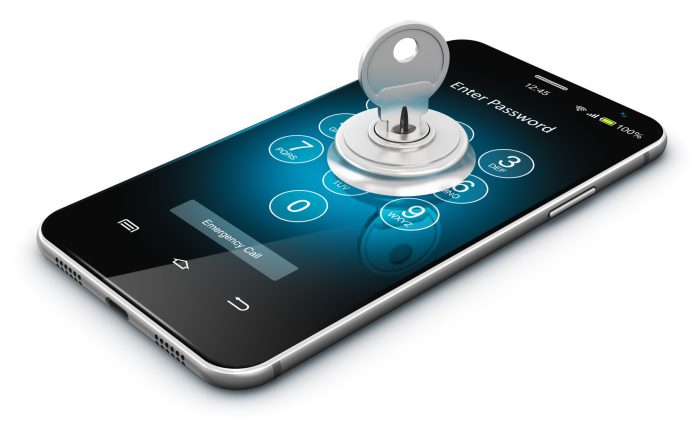Smartphones security is paramount in today’s digital landscape. Our smartphones have become extensions of ourselves, storing personal data, financial information, and sensitive communications. However, this convenience comes with inherent risks. From malware and phishing attacks to physical theft and data breaches, the threats to smartphone security are ever-present. Understanding these threats and implementing robust security measures is essential to safeguarding your digital life.
This comprehensive guide explores the various aspects of smartphone security, delving into the threats, best practices, and future trends. We will cover topics such as operating system security, app permissions, data encryption, network security, and physical protection. By the end, you will have a deeper understanding of the vulnerabilities and safeguards associated with smartphone security, empowering you to make informed decisions and protect your digital assets.
Smartphone Security Threats
Smartphones have become indispensable tools for communication, work, and entertainment. However, their increasing connectivity and storage of sensitive information also make them prime targets for cybercriminals. This section will delve into the most prevalent smartphone security threats, explaining how they can compromise user data and privacy.
Malware, Smartphones security
Malware, short for malicious software, encompasses various types of software designed to harm or exploit computer systems. Smartphone malware can infiltrate devices through malicious apps, infected websites, or even Bluetooth connections. Once installed, malware can steal personal data, monitor user activity, or even take control of the device.
- Trojans: These programs disguise themselves as legitimate apps but contain hidden malicious code. They can steal sensitive information like login credentials, financial details, and contact lists. For example, a seemingly harmless game app could secretly record keystrokes, capturing passwords entered on the device.
- Spyware: Spyware programs are designed to monitor user activity and collect personal data without their knowledge or consent. This data can include browsing history, location data, and even audio recordings. A recent example is the Pegasus spyware, which was used to target journalists and activists, allowing attackers to access their phone’s data and even control the microphone and camera.
- Ransomware: Ransomware encrypts a device’s data, making it inaccessible until a ransom is paid. Attackers often demand payment in cryptocurrency, making it difficult to trace. In 2021, a ransomware attack targeted a major US hospital, encrypting patient data and disrupting critical medical services. This incident highlights the potential impact of ransomware on essential services.
Phishing
Phishing attacks use deceptive emails, text messages, or websites to trick users into revealing sensitive information. These messages often appear legitimate, mimicking reputable organizations or individuals. They may include links to fake websites or attachments containing malicious software.
- Smishing: This type of phishing attack uses text messages to lure victims into providing personal information. For example, a message might claim to be from a bank, asking the user to update their account details. Clicking on the provided link could lead to a fake website designed to steal login credentials.
- Vishing: Vishing attacks use phone calls to deceive victims. Attackers may impersonate bank representatives or government officials, requesting sensitive information like credit card details or social security numbers. These calls often use spoofed caller IDs to appear legitimate.
- Spear Phishing: This highly targeted phishing attack uses personalized messages to deceive specific individuals. Attackers may gather information about their targets to create convincing emails or messages. For example, a spear phishing attack could target a company executive with a message claiming to be from a client, requesting a financial transaction.
Social Engineering
Social engineering involves manipulating people into divulging confidential information or granting access to systems. Attackers use psychological tactics to exploit human trust and vulnerabilities.
- Pretexting: Attackers create a believable story or scenario to gain the victim’s trust and extract information. For example, an attacker might call a victim pretending to be a tech support representative, claiming to need access to their device to fix a problem.
- Baiting: Attackers offer something tempting or valuable to entice victims into clicking on a link or downloading a file. This could be a free gift, a discount offer, or access to exclusive content. However, the link or file may contain malware or lead to a phishing website.
- Scareware: Attackers use fear or intimidation to convince victims to take action. For example, a pop-up message might claim that the device is infected with a virus and urge the user to install a fake antivirus program, which actually steals their data.
Final Wrap-Up: Smartphones Security
In conclusion, securing your smartphone is an ongoing process that requires vigilance and proactive measures. By staying informed about the latest threats, implementing robust security settings, and utilizing reliable security software, you can significantly reduce the risk of data breaches and maintain control over your digital life. Remember, your smartphone is a powerful tool, but it also requires responsible use and proactive security measures to ensure its safety and your peace of mind.
Smartphones have become indispensable tools in our lives, but they also present security risks. One aspect to consider is the camera, which can be used to capture sensitive information. To understand how different smartphone cameras stack up in terms of security features and potential vulnerabilities, you can check out Compare Smartphone Cameras: A Comprehensive Guide.
This guide provides insights into camera security, which can help you make informed decisions about protecting your privacy on your smartphone.
 Informatif Berita Informatif Terbaru
Informatif Berita Informatif Terbaru
